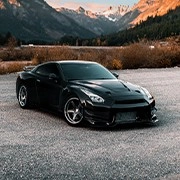The Rise of Motorcycle Clubs

Motorcycle clubs have long been a symbol of freedom and brotherhood on the open road.
But their story is much more than leather jackets and roaring engines; it is a tale of community, culture, and influence that has shaped much of the motorcycle world today.
From humble beginnings to their status as cultural icons, motorcycle clubs have left an indelible mark on the global landscape. In this article, we will understand the history of motorcycle clubs and examine how they've evolved and influenced not only the motorcycling community but also broader society.
The Birth of Motorcycle Clubs: From Passion to Brotherhood
The origins of motorcycle clubs trace back to the early 1900s, when motorcycling was still a burgeoning sport. At this point, motorcycles were not only an exciting new form of transportation but also a hobby for enthusiasts. Motorcycle clubs began forming organically in the United States, Europe, and other parts of the world, as groups of riders came together to share their passion for motorcycles and explore the open road.
One of the first known motorcycle clubs, the Motorcycle Club of America, was formed in 1903. This club brought together riders who wanted to bond over their shared love for motorcycling and promote safe riding practices. Motorcycle clubs in the early days were often focused on racing and riding, but they also played a crucial role in developing the idea of "brotherhood" within the community.
As the years went by, more specialized clubs began to form, each with its own unique focus. Some clubs were centered around certain types of bikes, such as Harley-Davidsons, while others focused on particular geographical areas or riding styles. This diversification allowed motorcycle clubs to expand beyond just enthusiasts and into a larger subculture.
The Brotherhood and Unity of Motorcycle Clubs
At their core, motorcycle clubs are about camaraderie, a sense of belonging, and shared experiences. For many riders, joining a motorcycle club is about finding a tight-knit community of people who understand the passion for motorcycles and the thrill of the road. The "brotherhood" aspect of these clubs is something that resonates deeply with their members, and it is often cited as one of the main reasons people choose to join.
In most clubs, members adhere to strict codes of conduct, which are often outlined in the club's bylaws. These codes include rules about respect, loyalty, and the importance of supporting fellow members. Clubs also hold regular meetings, events, and ride-outs, which foster a sense of community and allow members to bond over their shared love for motorcycling.
Beyond this close-knit community, motorcycle clubs also play a role in charity and social causes. Many well-known clubs are involved in charity work, from hosting toy drives to organizing fundraisers for those in need. The "brotherhood" is not just about riding together but also about giving back to the community and supporting causes that align with the club's values.
The Impact on Motorcycle Culture and Fashion
The influence of motorcycle clubs on fashion is undeniable. The leather jacket, once a practical piece of riding gear, became an iconic symbol of freedom and toughness. For many, wearing a club's colors and patches is a form of identity, a way of signaling loyalty and belonging to a certain group.
Patches and club logos have evolved into significant symbols within the motorcycle community. They often represent a club's history, values, and achievements. For example, the "patch" on the back of a jacket is not just a piece of cloth; it signifies a member's place within the club and their dedication to the community.
The idea of the "customized" motorcycle also grew in popularity thanks to the influence of motorcycle clubs. Clubs encouraged individuality in bike design, and riders began to customize their motorcycles to reflect their personal style. The café racer and chopper culture, for example, was born out of the desire to modify bikes for both style and performance.
Motorcycle Clubs and Their Modern Influence
Today, motorcycle clubs still play a crucial role in shaping the culture of motorcycling. While the days of the "outlaw" biker image are behind them, many clubs continue to operate under strict codes of conduct, and some even emphasize the importance of mentorship for new riders.
As the motorcycling community becomes more diverse, motorcycle clubs have adapted to include people from all walks of life. Women, minorities, and younger riders are joining clubs in increasing numbers, creating a more inclusive environment. Some clubs now focus on promoting safe riding, while others are committed to preserving the history of motorcycling and celebrating its traditions.
Moreover, the influence of motorcycle clubs extends beyond just the riders themselves. Their love for adventure and exploration has led to an entire industry built around motorcycling—gear, accessories, apparel, and even the design of motorcycles themselves.

The Legacy of Motorcycle Clubs
The history of motorcycle clubs is one of passion, community, and transformation. From their humble beginnings to their rise as cultural icons, motorcycle clubs have shaped the way we think about motorcycles and their place in society. The close-knit bonds within mainstream clubs, or the impact on fashion and bike design, motorcycle clubs have left an enduring legacy that continues to inspire new generations of riders.
As the world of motorcycling continues to evolve, motorcycle clubs will undoubtedly remain a cornerstone of the culture, constantly adapting while staying true to their roots of freedom, brotherhood, and the open road.

 · Automobile team
· Automobile team